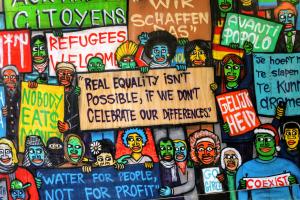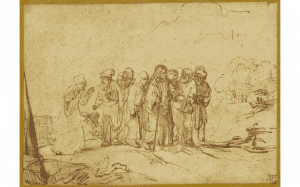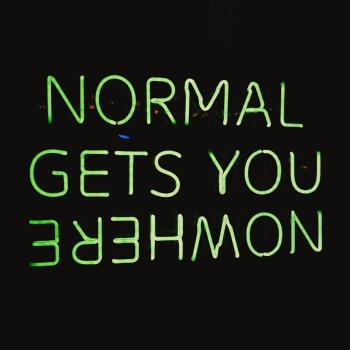It’s probably more accurate to say I am a recovering racist. Being anti-racist is what recovering is looking like for me. Hopefully, so are you.
My parents raised us not to be racist. Growing up in Tempe, Arizona in the 60s and 70s, we lived in a pretty caucasian world. My folks wanted us to not judge people by their skin color. That’s not some lefty-liberal ideal. No, my dad was a Goldwater conservative. I don’t think I believe in a color-blind society. Try as we might, we can’t help but see color. Color is beautiful.

Brains Get in the Way: Schemas
Heuristics are those puzzles and maps our brains create to tell us how the world works. Often those things which leave the deepest impression, or are most salient, or come from a trusted person, become key filters, or schemas, helping us make sense of the world and our experience of it. Please note, the world, and our experience of it are two separate things (just ask my wife about setting the thermostat, “of course it’s not too hot,” I say frequently).
Piaget, the famous developmental psychologist reminds of that our brains make sense of the world through schemas. Schemas are mental shorthand for describing what we think the world is like. Then we rely on schemas to interpret other experiences and catalog and organize our world.
Stereotypes
The social counterparts to schemas are stereotypes. Stereotypes abound, and until they are brought to light, or there is a significant number of contradictory examples, the stereotype remains a category for interpreting the world . Contributing factors such as cognitive bias, these socially shared schemas, that is, stereotypes, are resilient. Even when those who are negatively impacted by the stereotype attempt to overcome the stereotype, the effects are not always productive.
I Think, Therefore I Might have Racial Biases
From a very early age, we are shaped by impressions beyond ourselves. This is why Rene Descartes, climbed into an oven (not really, but there are some great mistranslations) to question reality and decided “cogito ergo sum” (“I think therefore I am”) was all he could muster. Most of us don’t have the time for that kind of introspection. So how do we go about becoming free of the assumed “truths” that color our judgement?
Maybe this is heresy, but Jesus had to deal with the schemas and assumptions common among Judaism in his day. The encounter he had with the Syrophoenician woman in Mark 7 and Matthew 15 certainly doesn’t make him seem Jesusy.
Jesus and Inherited Racial Bias

24 From there he set out and went away to the region of Tyre. He entered a house and did not want anyone to know he was there. Yet he could not escape notice, 25but a woman whose little daughter had an unclean spirit immediately heard about him, and she came and bowed down at his feet. 26Now the woman was a Gentile, of Syrophoenician origin. She begged him to cast the demon out of her daughter. 27He said to her, ‘Let the children be fed first, for it is not fair to take the children’s food and throw it to the dogs.’ 28But she answered him, ‘Sir, even the dogs under the table eat the children’s crumbs.’ 29Then he said to her, ‘For saying that, you may go—the demon has left your daughter.’ 30So she went home, found the child lying on the bed, and the demon gone (Mark 7:24-30).
Yet, when offered a chance to stay in relationship and to accept the challenge, Jesus’ response is mercy. He didn’t deny the woman her request, nor rebut her challenge. Jesus shows remarkable adaptation and grace. If Jesus had to deal with inherited stereotypes that limited his vision, who am I to assert that I am not a racist?
Accepted Before Rejected
Here and now, as long as we have a president, “I am not racist,” we will have a long way to go in undoing the structure of racism. As long as racism is denied, it is allowed to function without question or restriction. Vox.com cites the repetition of racist remarks by Donald Trump, providing evidence to lead toward a conclusion that racial bias is a feature of the president’s view of the world. However, before we get too judgmental, we too are in the grip of racism. To deny this possibility gives silent assent to its actions and it’s ability to infiltrate our judgments.
I am a Racist, and Anti-Racist
It feels a bit like an over-reach to say I am a racist, but maybe it is appropriate to consider, just the same. I don’t think I am a racist. But, then, how many of those nasty little assumptions have wriggled into my perception? Lately, I’ve begun to think of racism as a spectrum. At one end, we have low-level racism. At the other end, high-level. I’m guessing Jesus, Mother Terresa, Gandhi reside at the low end. At the other end are the ethnic-cleansers, apartheid creators, and genocide-doers. The rest of us are in between. By virtue of being human, being shaped and developing in relationship with other people, we all are affected by biases and assumptions and limitations of stereotyping. We are all racist. but not all of us are anti-racist.
Listening for an “Epistemological Advantage”
To be anti-racist means to listen to others who don’t look like me and learn from the schemas they have of the world. Drew Hart, in The Trouble I’ve Seen: Changing the Way the Church Sees Racism writes:
“Subdominant groups need not depend merely on stereotypes created from a distance about “the other” when they are able to share personal stories and experiences within their communities that, when collected, reveal troubling widespread realities. Altogether, the oppressed have an epistemological advantage that allows them to see things more clearly than those whose vision is blocked by denial and distorted by faulty claims of objectivity.”
This epistemological advantage needs to be heard. When I learned about child separation at the USA border, I thought it hard to believe. But a friend who is black and grew up in Virginia knew something I did not know. He taught me about white antipathy toward children of color that I had not heard about before. Growing up black in the south, my friend knew something I could not have known. He had an epistemological advantage. It was clear he had an epistemological advantage that I needed to learn from. He knew a story I had never heard. I will tell you about it in my next post.
Becoming Anti-Racist
There are ways to get some release from the hold of these schemas, stereotypes, and biases. But they will not be removed by denial of their existence.
- Start with acknowledging you likely have race-based biases
The unaddressed schemas formed early on without thought or permission. These early perceptions were simply accepted as the way the world works. Raise the possibility that these early impressions may be incorrect.
- Explore the stories of people of color, from historic figures like Sojourner Truth, Martin Luther King, Frederick Douglas, and Angela Davis to discover how their world views formed
Over the past year I sought to read, listen to, and watch, biographies, documentaries, and podcasts that helped me to listen to people of color. Here are a few: Drew Hart’s The Trouble I’ve Seen, Jemar Tisby’s, The Color of Compromise. The documentary, 13th on Netflix. I’ve enjoyed the helpful dialogue and storytelling on The Red Couch Podcast with rapper and activist Propaganda and his wife, university professor Dr. Alma Zaragoza-Petty. There are so many resources now, but these have helped me.
- Listen to the people of color in your own circle of relationships
I hope my friends of color don’t feel obligated to speak on behalf of their entire culture. I can’t expect that. But when I hear something, or want to understand something that seems racially insensitive, I run it past them for feedback and understanding.
- Invite friends to challenge racial and ethnic assumptions as they arise
This probably goes without saying, but there is a chance that we will say something or do something, especially unintentionally, that comes off racist. Be open to feedback. But more than being open to it, invite it. Ask for help. This is one way, a relationship-based way, to undo racism and become an anti-racist person.
However, we still live among racially biased systems in education, business, economics, and politics. These systems need to be acknowledged as well. But for now, begin with the personal and the local. But don’t stop there.
In my next post, I’ll share something that as a privileged white man was outside of my experience. A friend set me straight. Because of where and when he grew up, there were things that I in my privilege had never heard of.












